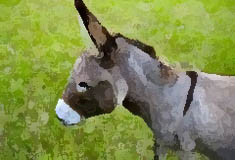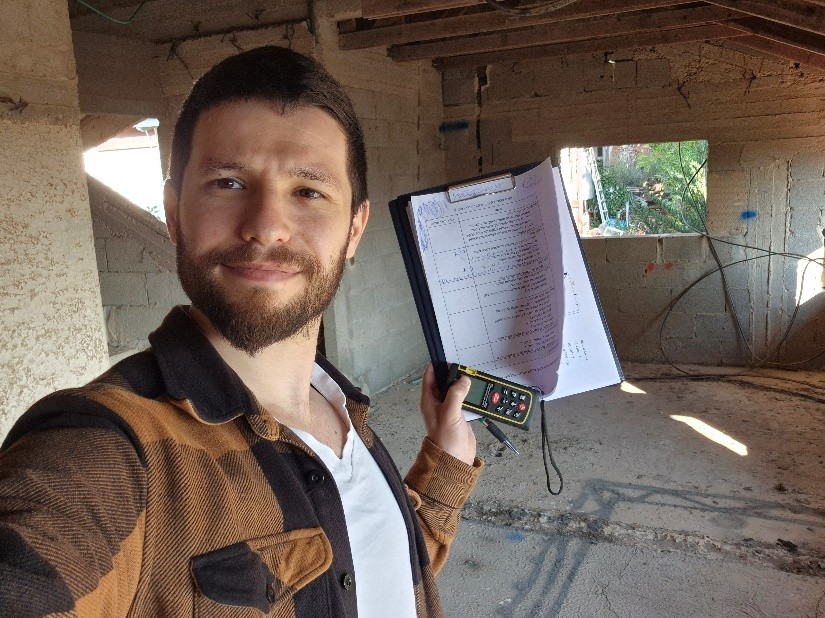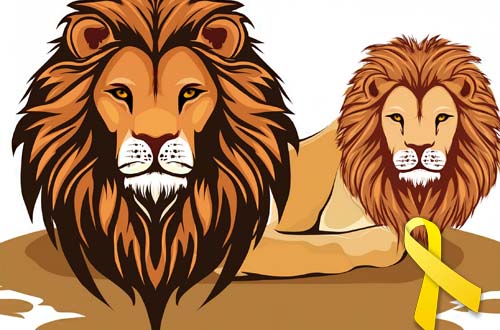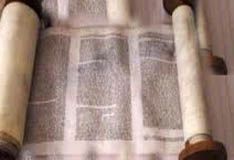Tehran Trembles, Jerusalem Rises: Yonatan ben Uziel’s Vision Comes Alive
הרב שי טחןכה סיוון, תשפה21/06/2025Within this covenant, Hashem makes a dramatic appearance—“a smoking furnace and a flaming torch that passed between the pieces.”
תגיות:איראןמלחמהעם ישראל
In Brit Bein HaBetarim (Bereishit 15:7–21) Hashem reveals to Avraham Avinu a prophetic vision outlining the future of the Jewish people. This foundational moment sets the stage for Jewish destiny, including both exile and redemption.
Within this covenant, Hashem makes a dramatic appearance—“a smoking furnace and a flaming torch that passed between the pieces.” This symbolizes a binding agreement and Divine presence accompanying Avraham’s descendants throughout the ages. Upon witnessing current world events—especially the war with Iran—it’s astonishing to realize how all of this was already outlined in the Torah, as explained by Yonatan ben Uziel.
astonishing to realize how all of this was already outlined in the Torah, as explained by Yonatan ben Uziel.
Targum Yonatan ben Uziel, the earliest and most expansive Aramaic commentary on the Torah, brings a profound interpretation to this passage. He views the vision as not just referring to the Egyptian exile but as an allusion to the four exiles—each represented by a different kingdom that would dominate Israel in the future. This mirrors the interpretation later expanded in Sefer Daniel.
The pasuk states: "As the sun was about to set, a deep sleep fell upon Avraham, and behold—a dread, great darkness fell upon him" (Bereishit 15:12). Chazal note that four distinct expressions are used in this pasuk: deep sleep (תרדמה), dread (אימה), great darkness (חשכה גדולה), and falling (נופלת). What do these four elements hint to?
Targum Yonatan connects the four empires to the pieces of the covenant to show that Jewish suffering is never random, but part of the Divine plan—foretold from the very beginning of our national destiny.
Here, the Targum offers a profound insight: he explains that in the end of days, this empire will fall and will never rise again—and from its downfall, Israel will rise, and Mashiach will come. Throughout history, this seemed impossible to anticipate. But what we’ve witnessed over the past week is a precise unfolding of this prophecy: Persia—modern-day Iran—is collapsing, while Israel is rising in the most miraculous ways. (Note that in some versions, the Targum reads Edom instead of Persia.)
In the prophecy of Daniel, Yishmael does not appear as the fourth exile; instead, it is Edom. This stands in clear contrast to what is presented here.
Yishmael is notably absent from the list of the four empires described in Daniel's prophecy. The Maharal explains this omission: unlike the others, Yishmael never had to conquer an existing empire. As a descendant of Avraham Avinu, Yishmael carried an innate sense of royalty and nationhood, which set him apart from the imperial powers that rose through domination.
Nevertheless, Daniel’s vision subtly includes Yishmael. In the statue seen by Nebuchadnezzar, the feet were composed of both iron and clay—iron representing Edom (Rome/Christianity), and clay symbolizing Yishmael (Islam). This mixture implies that in the final chapter of world history, these two powers—Edom and Yishmael—will stand together as the last great forces before the ultimate redemption.
The Gemara in Yoma (10a) records a debate as to which of the two—Edom or Yishmael (often referred to there as Persia, understood by many to mean modern-day Iran)—will dominate at the very end. This uncertainty is reflected in the unstable composition of the statue’s feet: two conflicting elements that cannot truly merge.
But the prophecy doesn’t end with them. A stone—unshaped by human hands—strikes the statue and shatters it. This stone represents the eternal kingdom of Hashem, led by an "ancient of days" who reigns forever. It is a vision of Mashiach and the ultimate redemption, when all false powers collapse and Divine truth fills the world.
We are standing at the threshold of that moment. Based on the words of Chazal and the unfolding of world events, it seems that the final stage of history is already in motion. The end of exile is near—and with it, the dawn of eternal clarity.
Within this covenant, Hashem makes a dramatic appearance—“a smoking furnace and a flaming torch that passed between the pieces.” This symbolizes a binding agreement and Divine presence accompanying Avraham’s descendants throughout the ages. Upon witnessing current world events—especially the war with Iran—it’s

Targum Yonatan ben Uziel, the earliest and most expansive Aramaic commentary on the Torah, brings a profound interpretation to this passage. He views the vision as not just referring to the Egyptian exile but as an allusion to the four exiles—each represented by a different kingdom that would dominate Israel in the future. This mirrors the interpretation later expanded in Sefer Daniel.
The pasuk states: "As the sun was about to set, a deep sleep fell upon Avraham, and behold—a dread, great darkness fell upon him" (Bereishit 15:12). Chazal note that four distinct expressions are used in this pasuk: deep sleep (תרדמה), dread (אימה), great darkness (חשכה גדולה), and falling (נופלת). What do these four elements hint to?
Targum Yonatan connects the four empires to the pieces of the covenant to show that Jewish suffering is never random, but part of the Divine plan—foretold from the very beginning of our national destiny.
• Deep sleep (תרדמה) – symbolizes the Babylonian exile, when the people were spiritually asleep and disconnected after the destruction of the First Beit HaMikdash.
• Dread (אימה) – represents the Persian-Mede Empire, in which the Jews faced existential fear, as in the story of Haman and the threat of national annihilation.
• Great darkness (חשכה גדולה) – refers to the Greek exile, which brought a darkness of the soul—spiritual war against Torah, mitzvot, and Jewish identity.
• Falling (נופלת) – points to the Persian (Iran) exile, marked by destruction, dispersion, and the ongoing challenges of galut.
Here, the Targum offers a profound insight: he explains that in the end of days, this empire will fall and will never rise again—and from its downfall, Israel will rise, and Mashiach will come. Throughout history, this seemed impossible to anticipate. But what we’ve witnessed over the past week is a precise unfolding of this prophecy: Persia—modern-day Iran—is collapsing, while Israel is rising in the most miraculous ways. (Note that in some versions, the Targum reads Edom instead of Persia.)
In the prophecy of Daniel, Yishmael does not appear as the fourth exile; instead, it is Edom. This stands in clear contrast to what is presented here.
Yishmael is notably absent from the list of the four empires described in Daniel's prophecy. The Maharal explains this omission: unlike the others, Yishmael never had to conquer an existing empire. As a descendant of Avraham Avinu, Yishmael carried an innate sense of royalty and nationhood, which set him apart from the imperial powers that rose through domination.
Nevertheless, Daniel’s vision subtly includes Yishmael. In the statue seen by Nebuchadnezzar, the feet were composed of both iron and clay—iron representing Edom (Rome/Christianity), and clay symbolizing Yishmael (Islam). This mixture implies that in the final chapter of world history, these two powers—Edom and Yishmael—will stand together as the last great forces before the ultimate redemption.
The Gemara in Yoma (10a) records a debate as to which of the two—Edom or Yishmael (often referred to there as Persia, understood by many to mean modern-day Iran)—will dominate at the very end. This uncertainty is reflected in the unstable composition of the statue’s feet: two conflicting elements that cannot truly merge.
But the prophecy doesn’t end with them. A stone—unshaped by human hands—strikes the statue and shatters it. This stone represents the eternal kingdom of Hashem, led by an "ancient of days" who reigns forever. It is a vision of Mashiach and the ultimate redemption, when all false powers collapse and Divine truth fills the world.
We are standing at the threshold of that moment. Based on the words of Chazal and the unfolding of world events, it seems that the final stage of history is already in motion. The end of exile is near—and with it, the dawn of eternal clarity.
הוסף תגובה
עוד מהרב שי טחן
עוד בנושא אמונה








